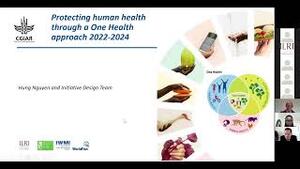
A systematic review of zoonoses transmission and livestock-wildlife interactions
The objective of this study is to synthesize best available scientific knowledge about zoonotic disease transmission through direct or indirect interactions between domestic livestock and wildlife.
Around 60% of all human pathogens are zoonoses and domestic animals and wildlife are of equal importance as reservoir hosts. Moreover, 75% of emerging infectious diseases are zoonoses and most emerge from wildlife. The objective of this study is to synthesize best available scientific knowledge about zoonotic disease transmission through direct or indirect interactions between domestic livestock and wildlife. Emphasis is on risk factors, drivers and trajectories of transmission, and promising interventions for controlling important zoonoses based on managing domestic livestock/wildlife interaction. The review considers eight themes:
- Transmission routes and wildlife
- Pathogen recombination
- Risk factors for transmission
- Drivers influencing interaction
- Historical changes and trends
- Livestock production systems
- Socio-economic, institutional and political factors
- Risk management and control
Scientists
John McDermott
Delia Grace
Jemimah Njuki
Mohammed Said
Polly Ericksen
Dirk Pfeiffer
Silvia Alonso
Richard Kock
Declan McKeever
Bryony Jones






















